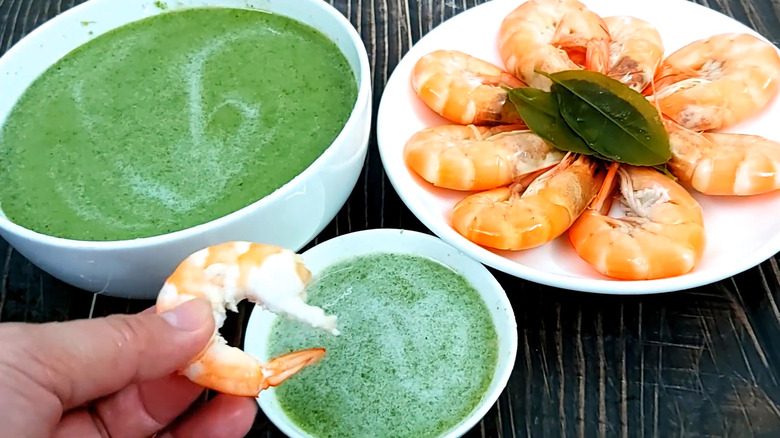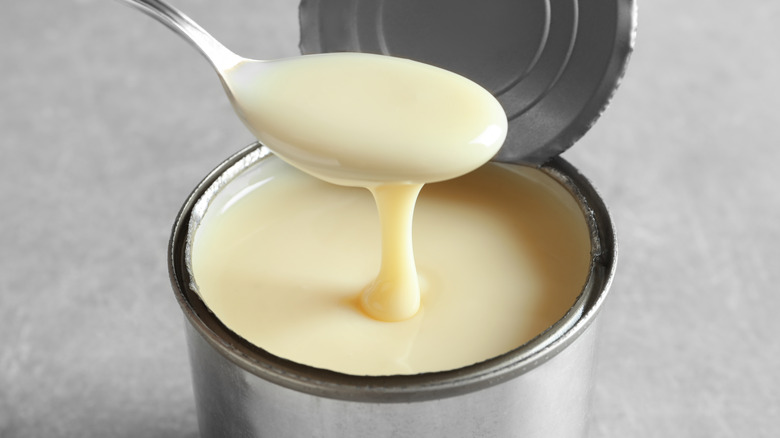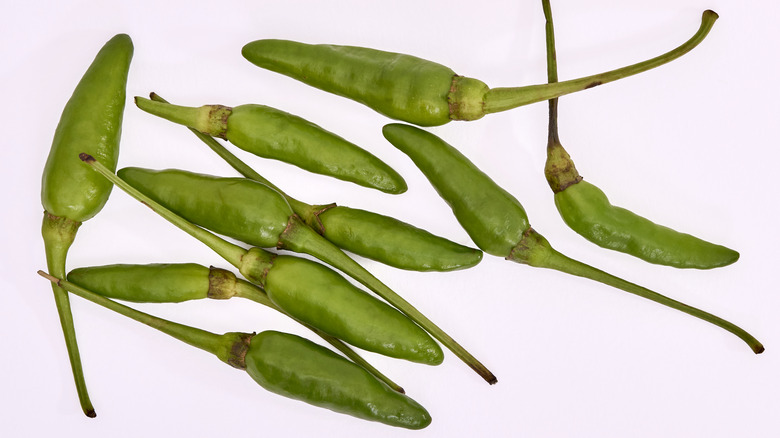Muoi Ot Xanh: The Vietnamese Sauce Featuring Sweetened Condensed Milk
If you're seeking a new sauce to elevate your grilled shrimp, muoi ot xanh may be the answer to your search. The Vietnamese condiment is most often paired with seafood, and is perfect with dishes like grilled shrimp since the unique taste enhances the mild and salty flavor of fish and crustaceans alike. The sauce is quite spicy, thanks to the addition of Thai chili peppers. That spiciness is balanced by the tangy acidity of lime juice and makrut lime leaves.
Although the spicy tartness of the sauce may seem daunting at first glance, the intensity is subdued by the addition of sweetened condensed milk. The dairy product adds an unusual creamy richness that tempers the stronger flavors. A little bit of sugar is often added to contrast the sour-and-salty elements and some salt can also be added to taste.
Muoi ot xanh is fairly easy to make, thanks to its short and simple ingredients list. You'll just need to add all of the ingredients to a blender or food processor, and process it all together until smooth.
Sweetened condensed milk is popular in Vietnamese cooking
The standout ingredient in the dish is the sweetened condensed milk. The dairy product became popular in Vietnam since it was canned, allowing it to stand up against the humid, hot climate. French colonizers introduced the product to Vietnam in the 1800s, though its popularity spiked even after the French left. Post-Vietnam War, canned milk production facilities were taken over by the Workers Party of Vietnam, and are still in operation today.
Sweetened condensed milk is often used in Vietnamese kitchens to add extra creaminess to iced coffee, mixed into an avocado smoothie, or poured over shaved ice. Although it's rare to see it in savory recipes, it's not unheard of. In Latin America, where it's also a very popular product, it's often used in savory applications and is the secret ingredient when caramelizing pork. It holds up in the savory muoi ot xanh and many other dishes because it does not curdle when acid (like lime juice) is added to the mix.
It's unclear where exactly in Vietnam muoi ot xanh came from, though some speculate that it may have originated in the coastal town of Nha Trang. The town is sometimes referred to as the seafood capital of the country. Plenty of seafood is caught and served in the area, so residents may have created the sauce as a way to spice up dishes.
Heat and acid are essential to the sauce
The green Thai chili peppers are also an essential part of the sauce since they provide spiciness to the condiment. The peppers are pretty common in Southeastern Asian dishes and provide an intense heat of around 50,000 Scoville units. It's important to deseed the peppers before adding them to the sauce, however. If left in, they may add a bitter taste and an unpleasant texture. If you're trying to avoid too much heat, you can substitute milder peppers, like Jalapeño or even green bell peppers.
Makrut lime leaves are also important to Vietnamese cooking. The leaves' addition to the muoi ot xanh adds a bright, citrus scent. The leaves taste fairly bitter and slightly spicy, which helps create a contrast to the sweetened condensed milk. They have a tough texture when left whole, so be sure to thoroughly process them when making the sauce. If you can't find them you can substitute some lime zest.
If you're looking to spice up your next meal, try blending up a batch of muoi ot xanh. The spicy, creamy, slightly tart condiment will liven up your plate and enhance the taste of any seafood it's served alongside.


